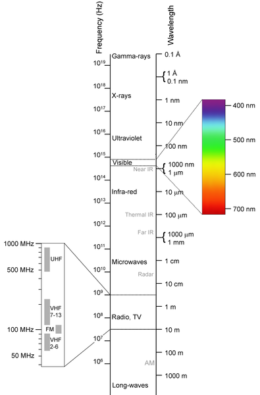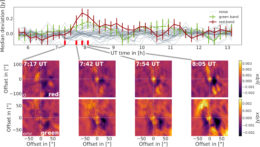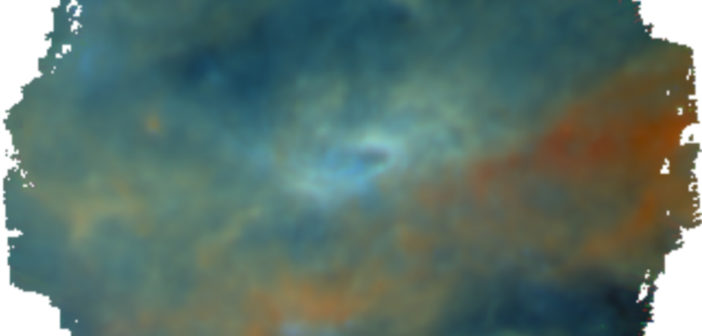A supermassive black hole lurks at the center of our galaxy — and we’re still trying to understand its structure and behavior. Now scientists have made new detections of Sgr A* in far infrared, helping us to further piece together a picture of this monster.
A Missing Window
Past research suggests that most galaxies host a supermassive black hole of millions or billions of solar masses in their center — and the Milky Way is no exception. Our galactic center is dominated by Sagittarius A* (Sgr A*), a black hole that weights in at about 4 million solar masses.

The electromagnetic spectrum (click to enlarge). Observations of Sgr A* have previously been lacking at far-infrared wavelengths below 250 µm. [Penubag]
Though we’ve learned a lot about our supermassive black hole from observations, we’re still short of a fully coherent picture. What is the structure and flow of the gas and dust surrounding the black hole? What causes the various different types of emission we’ve observed from Sgr A*? Is the variability in flux we see at different wavelengths related? Or does the emission come from multiple different sources, each with its own timescale for variability?
To further build out our understanding of this mysterious source, a team of scientists led by Sebastiano von Fellenberg (Max Planck Institute for Extraterrestrial Physics, Germany) has now obtained observations of Sgr A* at 160 and 100 µm for the first time, providing new information about Sgr A* in the missing window in the far infrared.
Hidden Variability

The authors’ observations of the far-infrared variability of the region around Sgr A* (click to enlarge). Correlated variability is visible between the two observed bands, and a point source can be seen at the position of Sgr A*. [von Fellenberg et al. 2018]
These observations have allowed the authors to place limits on Sgr A*’s far-infrared luminosity. By comparing these limits to the emission predicted by various models of accretion flow onto Sgr A*, von Fellenberg and collaborators have narrowed down the set of models that are consistent with the observations.
Though we still don’t have everything figured out about the supermassive black hole at our galaxy’s center, this work represents an important step that brings us a bit closer.
Citation
“A Detection of Sgr A* in the Far Infrared,” Sebastiano D. von Fellenberg et al 2018 ApJ 862 129. doi:10.3847/1538-4357/aacd4b

